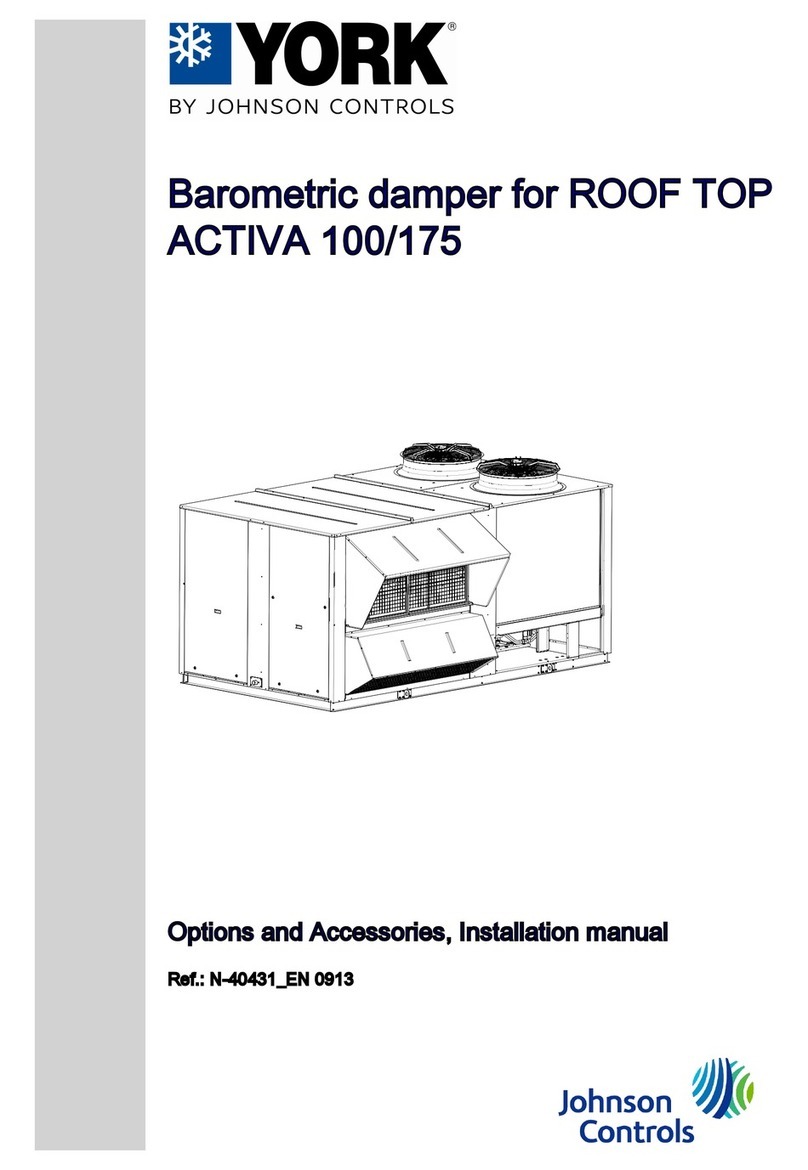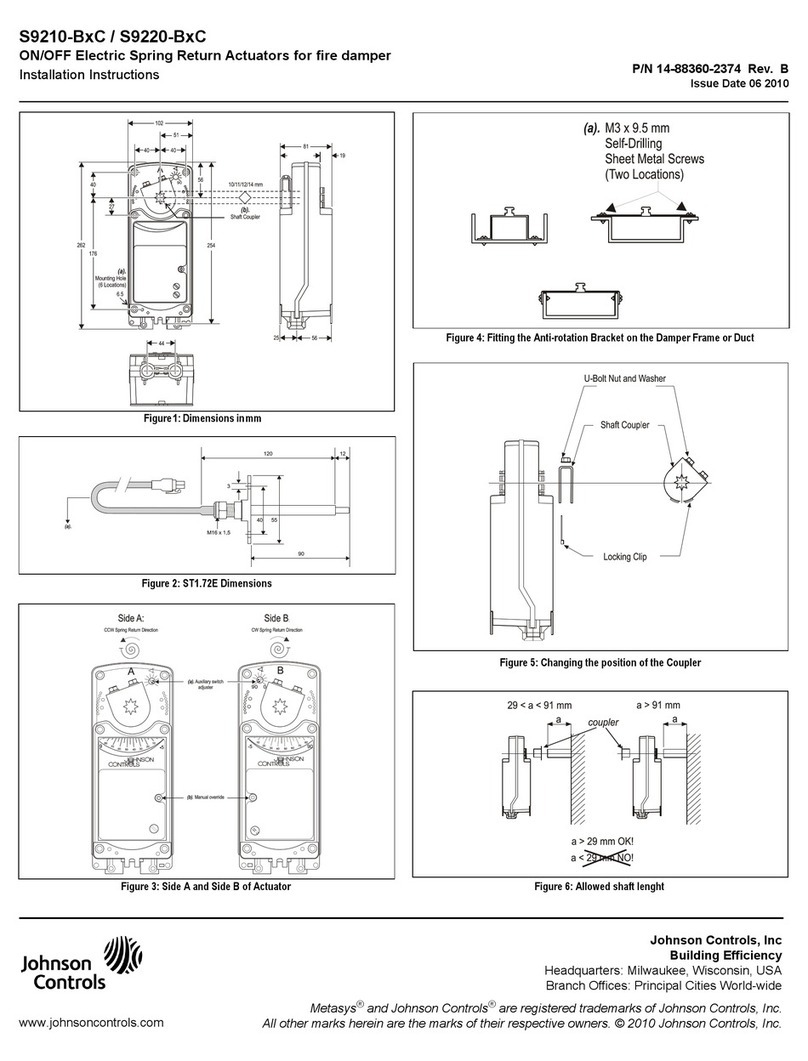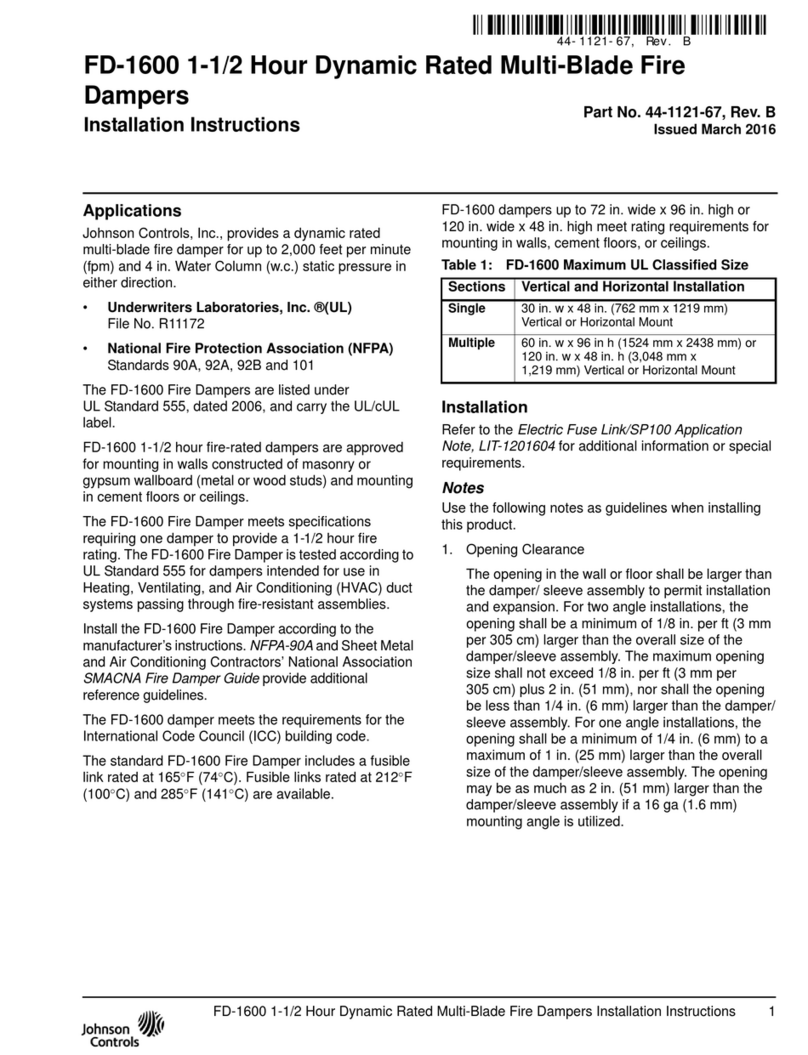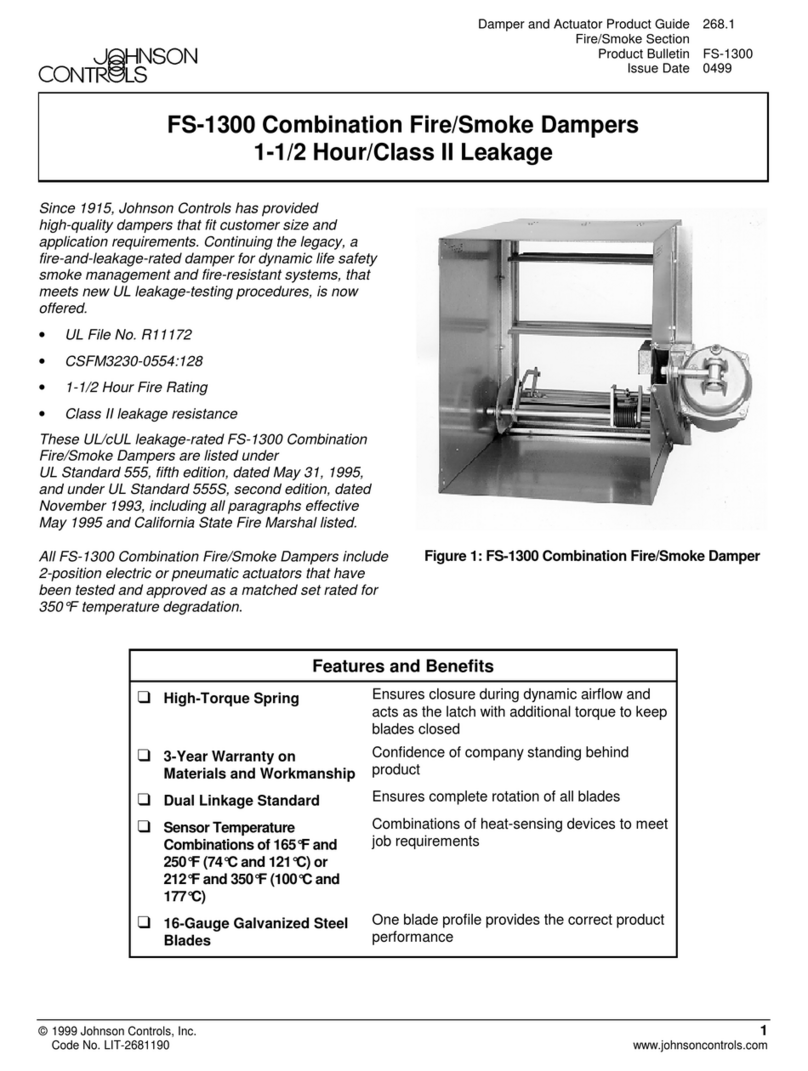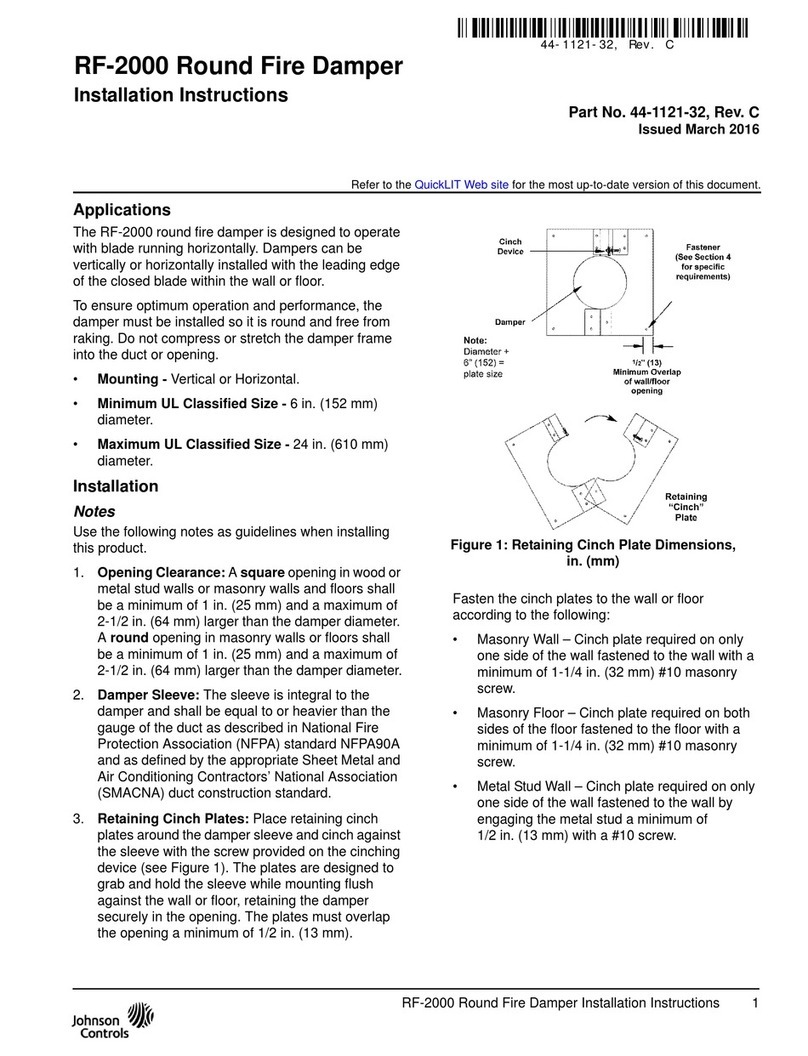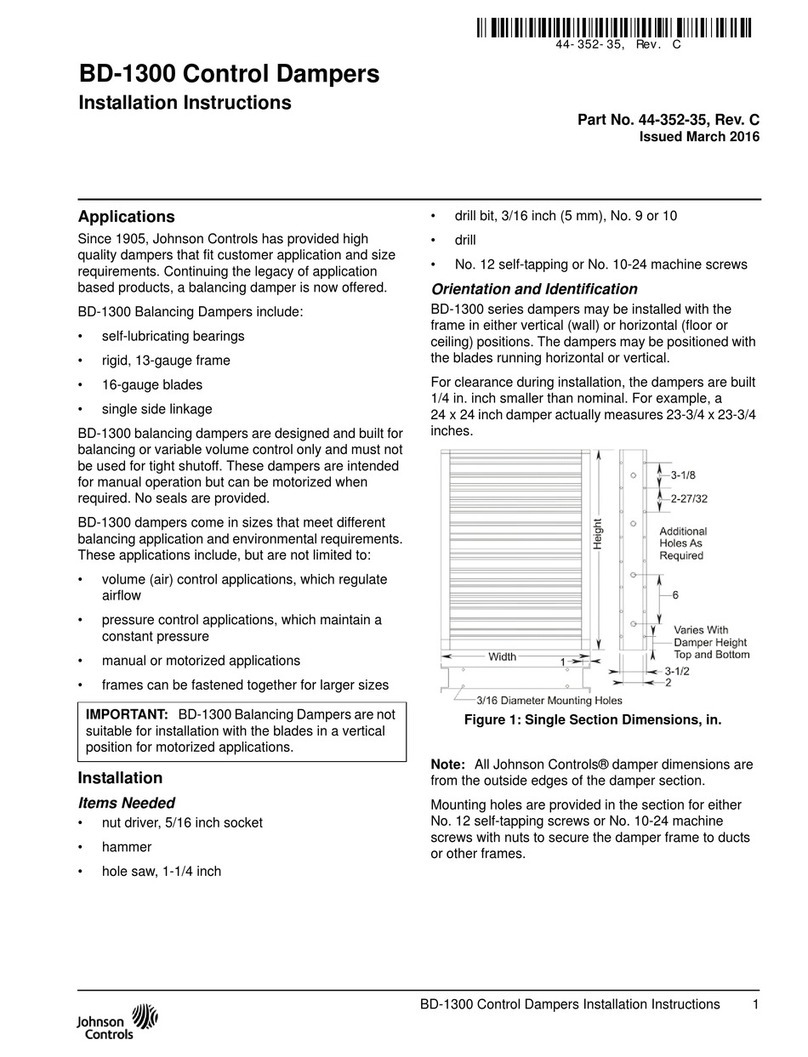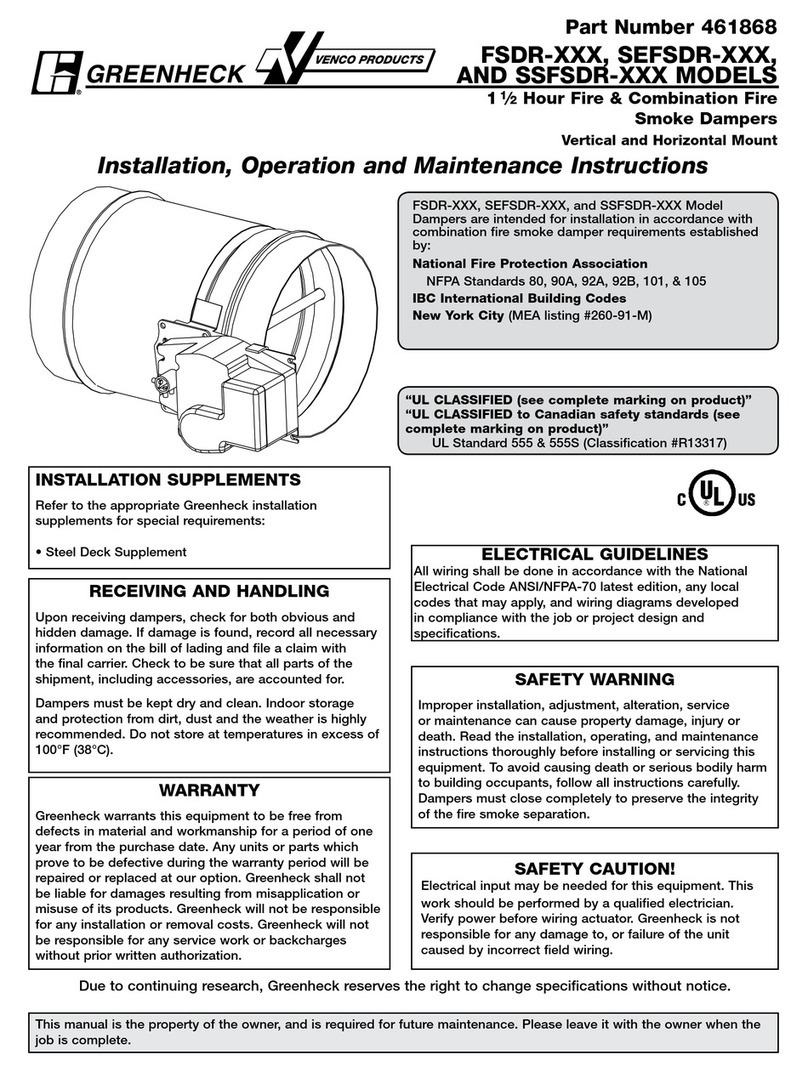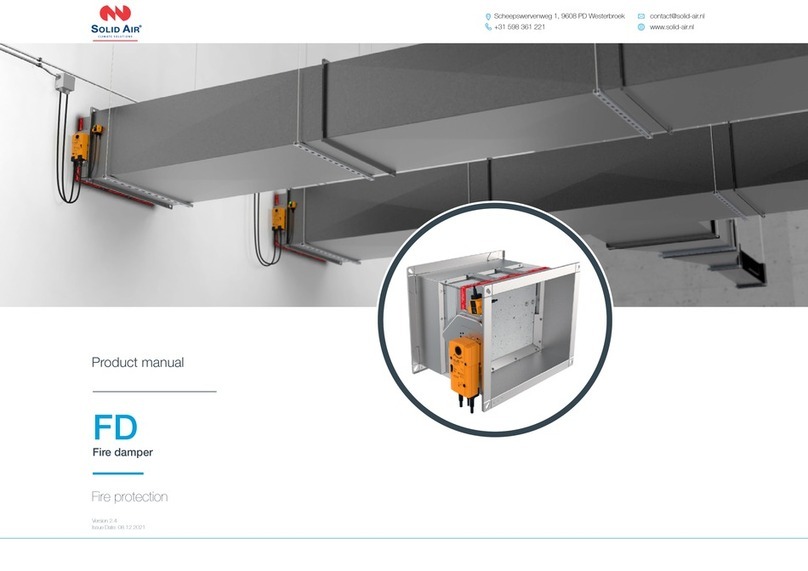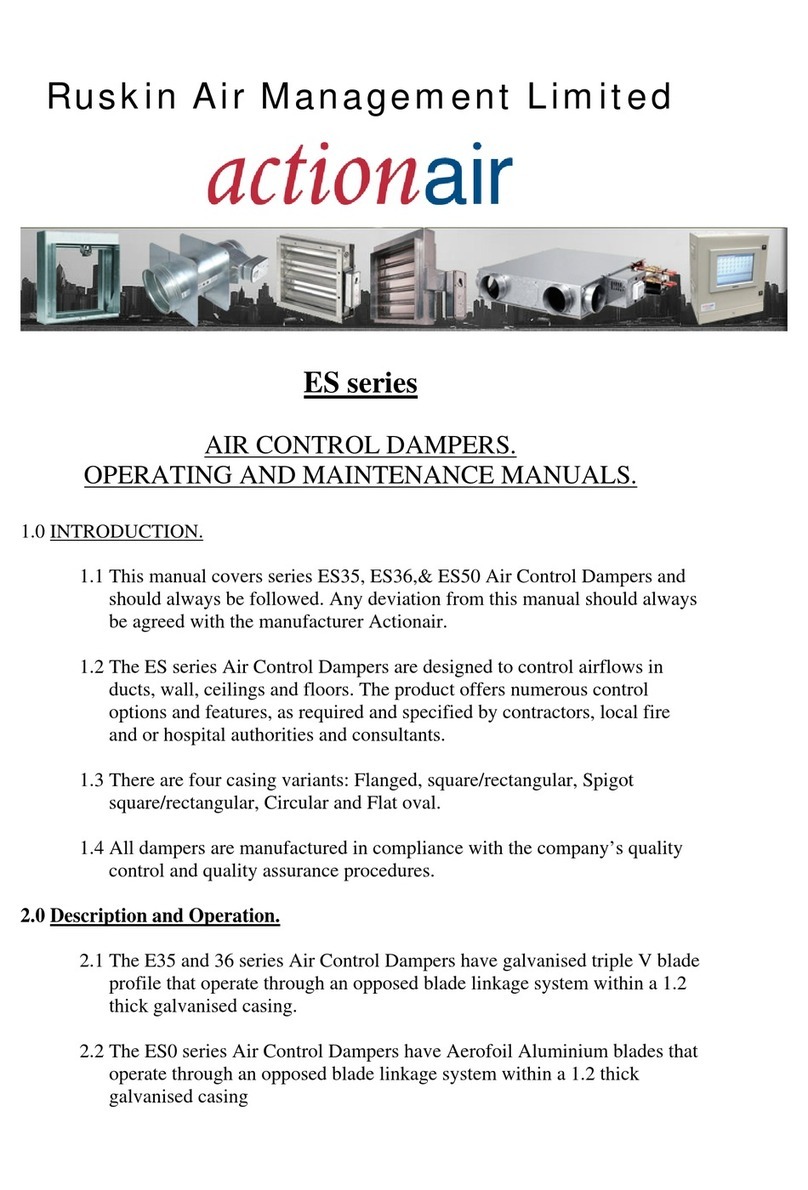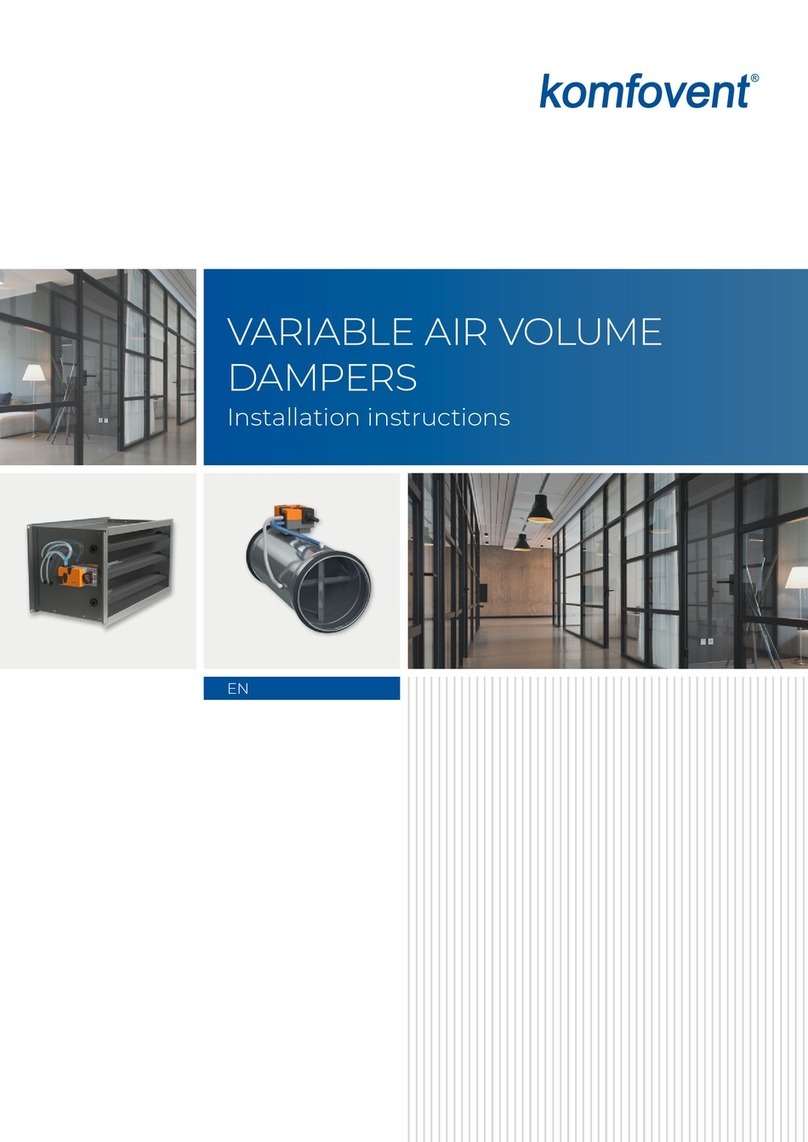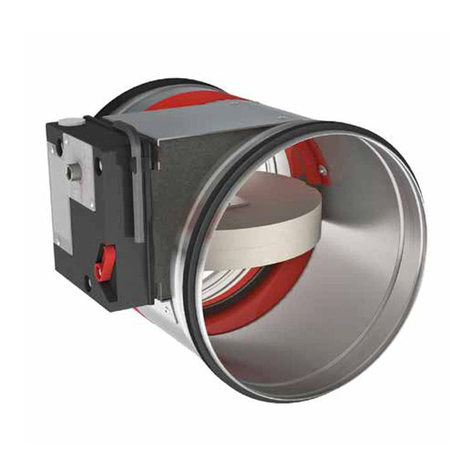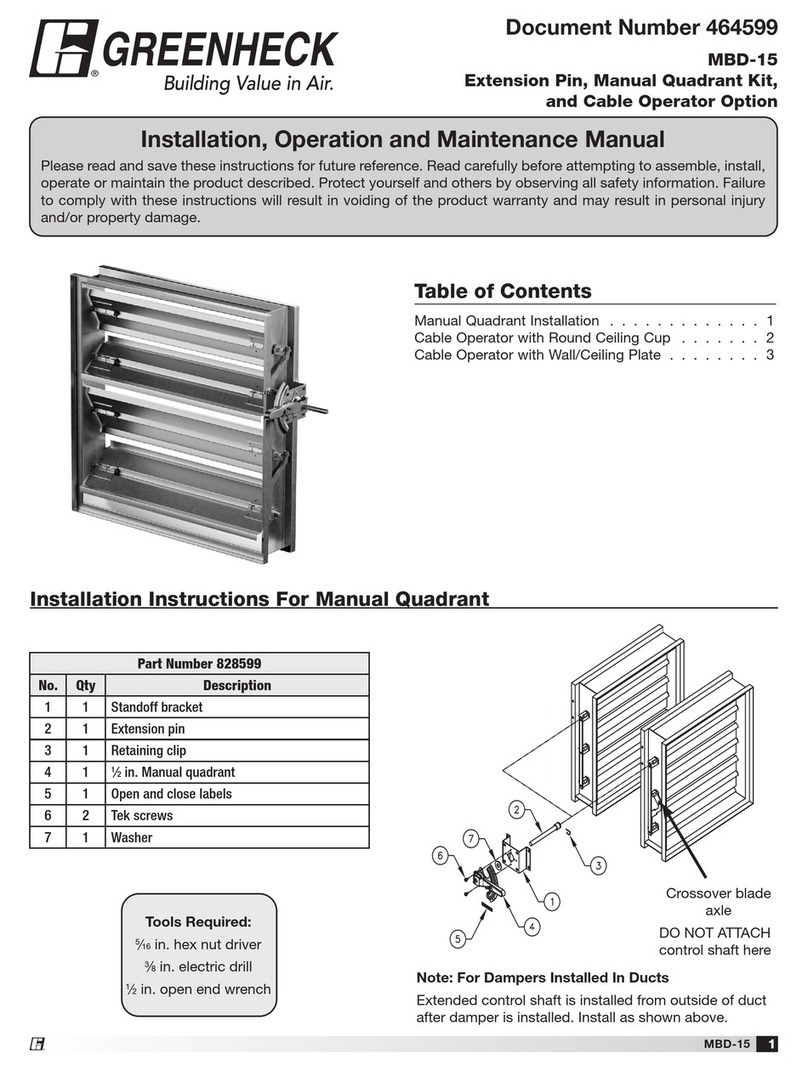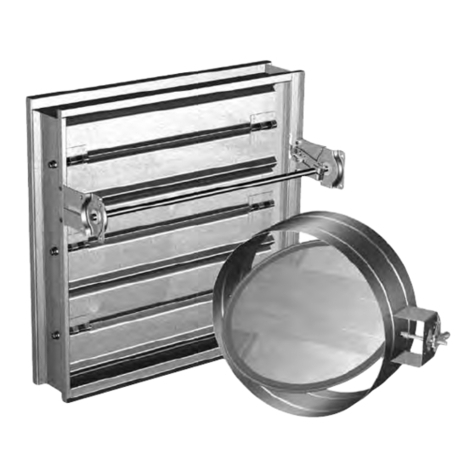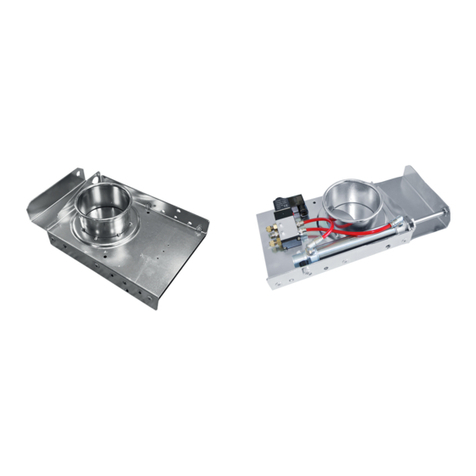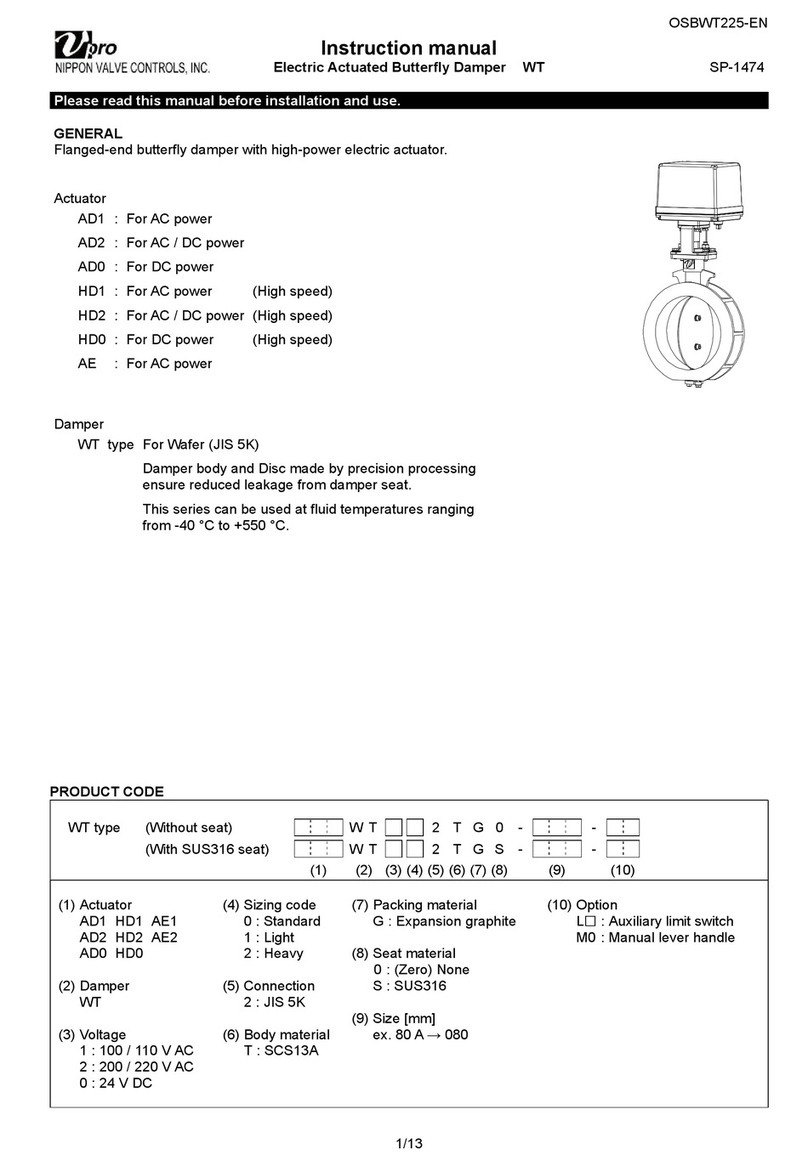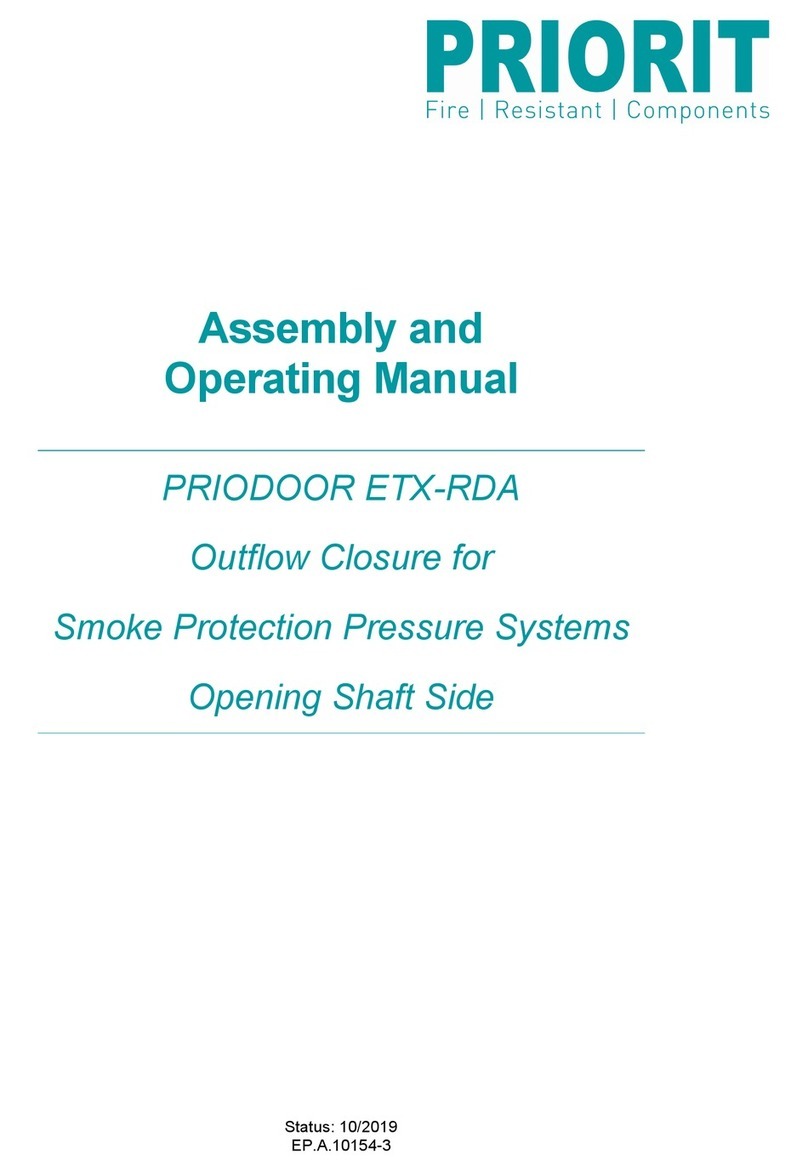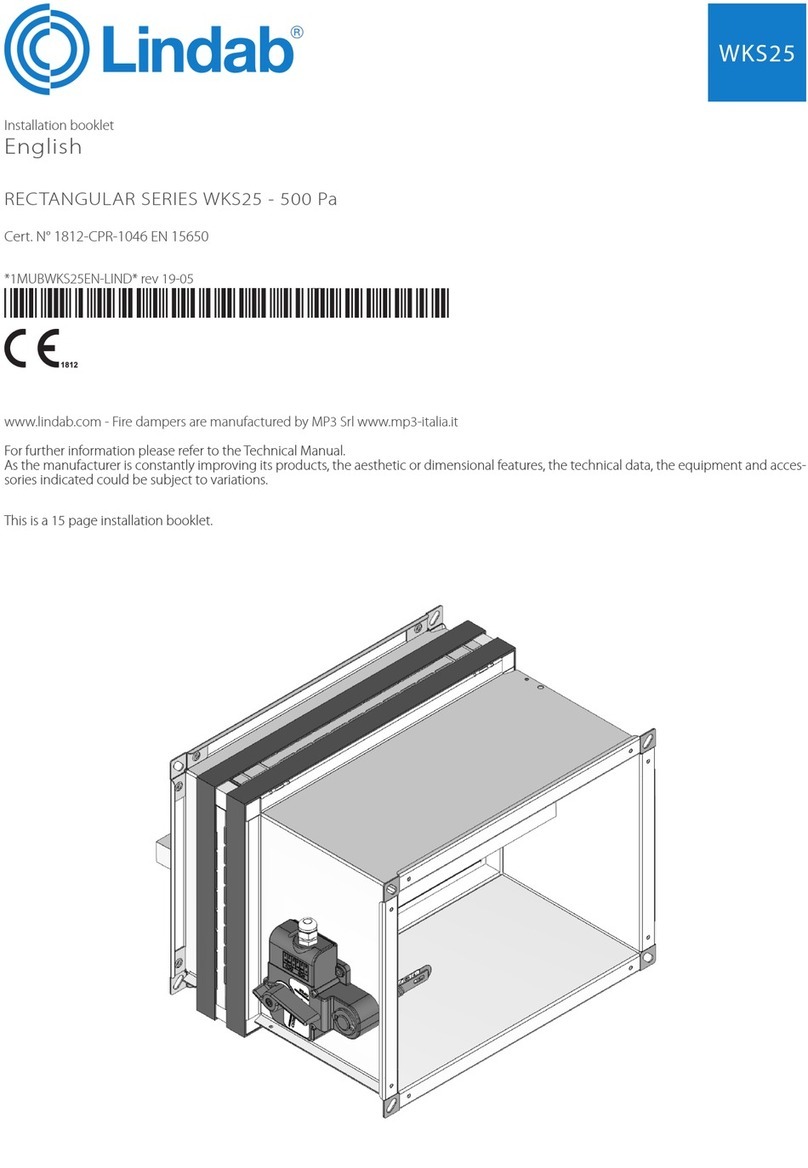
4FD-1300 1-1/2 Hour Dynamic Rated Multi-Blade Fire Damper Installation Bulletin
Installation
1. Check the schedules for proper damper location
within the building.
Figure 10: Fusible Link Location
2. Visually inspect the damper for damage and verify
that the fusible link is in place between the two
couplers as shown in Figure 10.
If the fusible link is not present or there are any
signs of damage during the inspection:
!
DANGER: To avoid causing death or
serious bodily harm to building
occupants, make sure all damper
corners are square and the
damper has not been damaged.
Do not install any damper which
is deformed or damaged.
Note: Maintain the UL certification by ordering
a replacement fusible link from
Johnson Controls before continuing.
!
DANGER: To avoid causing death or
serious bodily harm to building
occupants, never install a fire
damper without the proper UL
listed fusible link in place.
Use the following for selecting the proper fusible link:
For code FOVLD (165°F) use replacement fusible link
DMPR-RF001.
For code FOVHD (212°F) use replacement fusible link
DMPR-RF002.
After you receive the new fusible link:
•Place the fusible link on the coupler from the
bracket shown in Figure 10. Use a long
needle-nose pliers to hold fusible link in position.
•Attach a pipe wrench to a convenient location on
the jackshaft or use a 1/2 inch open-end wrench
on the end of the drive shaft.
•Rotate the jackshaft in a clockwise direction until
the other coupler post is in position and install the
fusible link onto the post.
•Slowly reduce pressure on the pipe wrench until
slack is taken up by the fusible link.
3. The FD-1300 Fire Damper must be installed in
accordance with Standard NFPA-90A at the point
where a duct passes through a required fire
barrier. The blades, when closed, shall be within
the plane of the fire barrier (wall or floor). The
closing mechanism must be within the confines of
the sleeve.
For additional information, refer to the SMACNA
Fire Damper Guide.
Figure 11: Wall Opening Requirements
4. The opening in the wall should be 1/2 inch larger
than the width and height dimensions of the sleeve
to accommodate the heads of the screws securing
the sleeve to the damper. Refer to Figure 11.
!
DANGER: To avoid death or serious bodily
harm to building occupants,
dampers mounted vertically, with
more than three blades, must be
installed with the fusible link above
the centerline of the damper.







